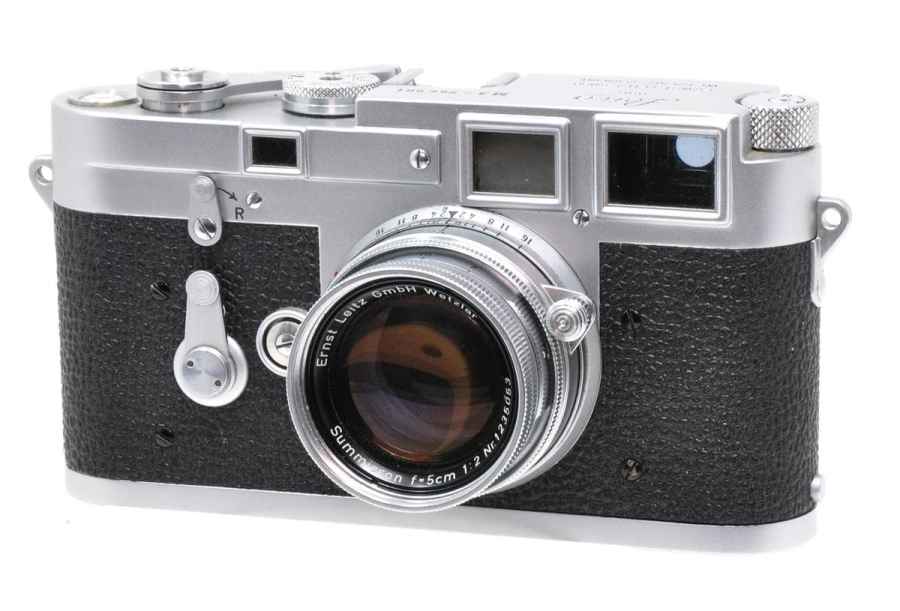
Leica M3 with 50mm f/2 Summicron lens in its collapsed position
- Launched 1954
- Price at launch £185 (50mm f/2 collapsible Summicron)
- Guide price now £1,300-1,500 (50mm f/2 collapsible Summicron)
Some say the Leica M3 is the best built and most beautiful 35mm camera ever made. Handle one for the first time and you might find it difficult to disagree. The M3 is a masterpiece of ergonomic design. Weighing in at 900g, it sits comfortably in the hands, with basic controls falling exactly where your fingers expect them. It offers everything that’s needed from a top quality camera.
The first Leica was introduced in 1925. There was a slight change in body style with the addition of a rangefinder in the 1932 Leica II, but after that, despite many new models being introduced, nothing much changed cosmetically. Then, in 1954, there came a total rethink in style and design. The old screw mount for lenses was replaced by a bayonet fitting. The new rangefinder used a longer base for more accurate focusing. A larger-than-before viewfinder gave a view 90 per cent life size and contained parallax-corrected bright frames that appeared as 50mm, 90mm or 135mm lenses were fitted. Delayed action was also added.

Top view with the lens extended ready for shooting
As with older Leicas, the M3 is loaded through the base, but this is made easier than before by the inclusion of a hinged door in the back of the body. The focal plane shutter gives speeds of 1–1/1,000sec set on one control, as opposed to the two controls on older Leicas. The film wind lever that replaces the old film wind knob, needs two strokes on early models but changes to a single stroke on cameras made after 1958. The collapsible Summicron 50mm f/2 lens on the camera seen here is just one of a super-wide range of bayonet-fit wideangle, standard and telephoto lenses introduced by Leitz especially for the camera. And, with the addition of its Visoflex accessory, you can even turn the M3 into a single lens reflex.
What’s good: Mechanically reliable, optically superb.
What’s bad: Film loading a little fiddly, otherwise it’s all good.

The M3 as a single lens reflex equipped with its Visoflex accessory and 20cm f/4.5 Telyt lens







